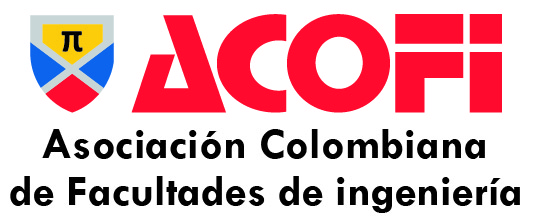Solvers comerciales: ¿la mejor alternativa para la enseñanza?
DOI:
https://doi.org/10.26507/rei.v8n15.282Palabras clave:
optimización, programación lineal, software libre, educación ingenieríaResumen
Este artículo presenta un análisis exploratorio sobre la conveniencia y factibilidad del uso de software libre o software comercial como herramienta de apoyo en el proceso de enseñanza de asignaturas de programas de ingeniería en donde se desarrollan competencias en modelación matemática. En particular, este trabajo presenta elementos para motivar la discusión respecto a la escogencia de solvers comerciales o libres para la enseñanza de modelos lineales y mixtos y su solución, como fase de iniciación al campo de modelado matemático. Se desarrolló una fase experimental usando instancias de la librería NETLIB para evaluar el desempeño en tiempo de ejecución y capacidad para hallar solución a las instancias como posible criterio fuerte al momento de sustentar la escogencia de las opciones comerciales sobre las de código libre. Se evaluaron dos aplicaciones de software libre y tres de software comercial encontrándose que estadísticamente no hay diferencias significativas en la calidad de las soluciones reportadas por los solvers comerciales y uno de los solvers libres, apoyando la idea del software libre como alternativa apropiada para el proceso de enseñanza y solución de los mencionados modelos en el entorno académico.
Descargas
Referencias bibliográficas
Ahuja, R.K., Magnanti, T.L., & Orlin, J.B. (1993). Network Flows. New Jersey: Prentice Hall.
Ang, J.S.K., Cao, Ch. & Ye, Heng-Qing. (2007). Model and algorithms for multi-period sea cargo mix problem. European Journal of Operational Research, 180(3), 1381-1393.
Bachouch, R.B., Guinet, A., & Hajri-Gabouj, S. (2012). An integer linear model for hospital bed planning. International Journal of Production Economics, 140(2), 833-843.
Bazaraa, M.S., Jarvis, J.J., & Sherali, H.D. (1977). Linear Programming and Network Flows. New York: Jhon Wiley & Sons.
Bergamaschi, R.A., Piga, L., Rigo, S., Azevedo, R. & Araújo, G. (2012). Data center power and performance optimization through global selection of P-states and utilization rates. Sustainable Computing: Informatics and Systems, 2(4), 198-208.
Bohle, C., Maturana, S. & Vera, J. (2010). A robust optimization approach to wine grape harvesting scheduling. European Journal of Operation Research, 200(1), 245-252.
El-Sayed, H., Ibrahim, W., & Amer, H. (2009). An adaptive heuristic algorithm for VLSI test vectors selection. European Journal of Operational Research, 199(3), 630-639.
Fourer, Robert. (2005). Software Survey – Linear Programming. Eighth in a series of LP surveys highlights recent trends in profession’s most popular software. ORMS today. Recuperado el 13-02-2013 de http://www.lionhrtpub.com/orms/orms-6-05/frsurvey.html
Free Software Foundation (2009). The free software definition. Recuperado el 6-10-2009 de http://www.fsf.org/licensing/essays/free-sw.html
Fu, L., Trudel, M. & Kim, V. (2009). Optimizing winter road maintenance operations under real-time information. European Journal of Operational Research, 196(1), 332-341.
GNU. (2009). Recuperado el 6-10-2009 de http://www.gnu.org
Han, B., Leblet, J. & Simon G. (2010). Hard multidimensional multiple choice knapsack problems, an empirical study. Computers and Operational Research, 37(1), 172-181.
Hillier, F.S., & Lieberman G.J.. Introducción a la Investigación de Operaciones, Mc Graw Hill, México, 1997.
Hock, W & Schittkowski, K. (1980). Test Examples for Nonlinear Programming Codes. Journal of Optimization Theory and Applications, 30(1), 127, 1980.
Lasdon, L. (1970). Optimization Theory for large Systems. New York: Macmillan.
Lesser General Public License. (1999). GNU LESSER GENERAL PUBLIC LICENSE recuperado el 6-10-2009 de http://lpsolve.sourceforge.net/5.5/LGPL.htm
LINGO SYSTEMS. (2006). LINGO: The modeling language and optimizer. Chicago: LINGO SYSTEMS.
Lp_Solve. (2009). Recuperado el 6-10-2009 de http://groups.yahoo.com/group/lp_solve/
Mashaei, M. & Lennartson, B. (2013). Energy Reduction in a Pallet-Constrained Flow Shop Through On–Off Control of Idle Machines. Automation Science and Engineering, IEEE Transactions, 10(1), 45-56.
Mitsutoshi, K., Takashi, I., Koji, N., Mutsunori, Y., & Hiroshi., N. (2009). Exact algorithms for the two-dimensional strip packing problem with and without rotations. European Journal of Operational Research, 198(1), 73-83.
Montoya-Torres, J.R., Aponte, A., Rosas, P. & Caballero-Villalobos, J.P. (2010). Applying GRASP meta-heuristic to solve the single-item two-echelon uncapacitated facility location problem. International Journal of Applied Decision Sciences, 3(4), 297-310.
NETLIB (2009). NETLIB Linear Programming test set [base de datos en línea]. Recuperado el 6-10-2009 de http://cuter.rl.ac.uk/cuter-www/Problems/netlib.shtml
Rossi, A., Singh, A. & Sevaux, M. (2012). An exact approach for maximizing the lifetime of sensor networks with adjustable sensing ranges. Computers & Operations Research, 39(12), 3166-3176.
Salvietti, L. & Smith, N.R. (2008). A profit-maximizing economic lot scheduling problem with price optimization. European Journal of Operational Research, 184(3), 900-914.
Winston W. L. (2004). Operations Research: Applications and Algorithms. (4ta. Ed.). Thompson.
Yi, W. (2013). Optimally Removing Intercore Communication Overhead for Streaming Applications on MPSoCs. IEEE Transactions on Computers, 62(2), 336-350.
Descargas
Archivos adicionales
Publicado
Cómo citar
Número
Sección
Licencia
Se autoriza la reproducción total o parcial de los documentos publicados en la Revista siempre y cuando se cite la fuente y el autor.
| Estadísticas de artículo | |
|---|---|
| Vistas de resúmenes | |
| Vistas de PDF | |
| Descargas de PDF | |
| Vistas de HTML | |
| Otras vistas | |









